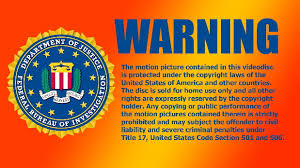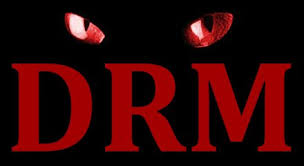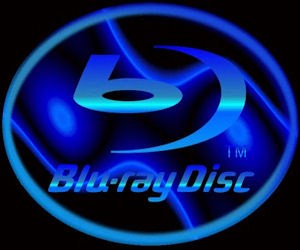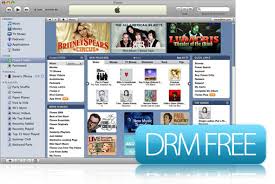 Today I want to talk about Digital Rights Management, better known as DRM. Most of you have had some experience with DRM if you’ve downloaded a music file from iTunes and wanted to transfer it to a non-Apple device. Getty Images sells DRM free and royalty-based images, the higher the resolution, the more expensive they are. DRM is all around us now. It’s irritating but necessary, the unfettered free transfer of all digital files, regardless of the quality, creator, or owner needs to be managed to be fair and result in good public policy.
Today I want to talk about Digital Rights Management, better known as DRM. Most of you have had some experience with DRM if you’ve downloaded a music file from iTunes and wanted to transfer it to a non-Apple device. Getty Images sells DRM free and royalty-based images, the higher the resolution, the more expensive they are. DRM is all around us now. It’s irritating but necessary, the unfettered free transfer of all digital files, regardless of the quality, creator, or owner needs to be managed to be fair and result in good public policy.
What are our “digital rights”? Where and how do we draw the line between theft and fair use? The story of how it evolved is little known and less understood. Before you can form a valid opinion one way or the other, its helpful to be informed. I’ve been promoting HD Audio and Live Concerts on Blu-ray for a few years and have kept track of the events that lead to DRM today, in my opinion a really great new era for music lovers and audiophiles. Is it Orwellian or Ingenious?
The movie studios and record labels fought a 40 year battle to control the piracy and illegal copying of their products but they lost. The analog hardware technology didn’t have copy-guard and attempts to impose it through the software all failed. Court cases challenging the record labels right to tell us what we could and couldn’t do with property we owned resulted in the Supreme Court ruling in favor of consumers, declaring our right to Fair Use. As long as we didn’t profit from the copies we made, we were free to do so. This was in the 1970’s, we bought albums and made cassette copies for our car audio systems and boom boxes. Bootlegs existed but on a small scale.
 In the 1990’s, the FCC began to prepare the USA for the digital era. HDTV and broadcast standards were adopted and new rules for digital content were enacted by
In the 1990’s, the FCC began to prepare the USA for the digital era. HDTV and broadcast standards were adopted and new rules for digital content were enacted by  Congress in the Digital Millennium Copyright Act of 1998. The DMCA gave the studios and record companies new rights to control their content, recognizing that a new generation of consumers was downloading and sharing digital music files, stealing the intellectual property owned by the artists and the studios. New legal battles led to a 2nd Supreme Court decision over-turning the Fair Use Doctrine, instead protecting the copyright holders right to use new anti-piracy technology to prevent the illegal copying and distribution of their intellectual property. kekova tekne turu
Congress in the Digital Millennium Copyright Act of 1998. The DMCA gave the studios and record companies new rights to control their content, recognizing that a new generation of consumers was downloading and sharing digital music files, stealing the intellectual property owned by the artists and the studios. New legal battles led to a 2nd Supreme Court decision over-turning the Fair Use Doctrine, instead protecting the copyright holders right to use new anti-piracy technology to prevent the illegal copying and distribution of their intellectual property. kekova tekne turu
The court took the side of the artists, noting in its decision that if it failed to do so, the artists would stop creating new works of art. As processing speed increased, DVD replaced VHS tape, storage space increased allowing more data to be held on a disc the same size as a CD. The increased data capacity, combined with new algorhythims and data processing power allowed an increase in dynamic range on DVD, leading to SACD and DVD-Audio as well as improved audio on cable and sat broadcasts. These formats didn’t catch on for music with the public, CD’s were good enough for the mass market. bodrum escort
 At the same time, HDTV took off, flat panel displays dramatically revolutionized the quality of our home video and soon consumers were looking for more HD content to consume, both music and movies. Two tangible disc formats, HD-DVD and Blu-ray were announced in 2005, fighting a battle to become the next storage media standard. While the battle waged on, consumers had to stand pat until the dust settled. After 2 years, Sony paid $500 million to the other studios that supported HD-DVD so they would adopt Blu-ray. Game over, Sony won, Blu-ray became the new storage disc format for audio and video content in high definition, able to store 50 Gigabytes of uncompressed audio and video on a single 5″ disc that consumers were familiar with.
At the same time, HDTV took off, flat panel displays dramatically revolutionized the quality of our home video and soon consumers were looking for more HD content to consume, both music and movies. Two tangible disc formats, HD-DVD and Blu-ray were announced in 2005, fighting a battle to become the next storage media standard. While the battle waged on, consumers had to stand pat until the dust settled. After 2 years, Sony paid $500 million to the other studios that supported HD-DVD so they would adopt Blu-ray. Game over, Sony won, Blu-ray became the new storage disc format for audio and video content in high definition, able to store 50 Gigabytes of uncompressed audio and video on a single 5″ disc that consumers were familiar with.
Chip-maker Silicon Image developed a new high speed digital pathway for the discs called HDMI, a single cable for audio and video (the high end cable business was in for a shock). The studios hired Intel to create a new encryption procedure called HDCP, allowing the studios and record labels to include the highest resolution audio and video content ever; a one-to-one copy of the original master recording, with full bandwidth and dynamic range. The new HDMI protocols would protect the highest resolution content from being copied, however Hollywood had to live with the fact that the lower resolutions would still be available un-protected (DRM free) against copying. They came to view this as a way to promote the content, allow the low res version out and some people will buy the highest res version on Blu-ray. Most people don’t want to steal their content, but they are more concerned with portability and convenience than quality.
with the fact that the lower resolutions would still be available un-protected (DRM free) against copying. They came to view this as a way to promote the content, allow the low res version out and some people will buy the highest res version on Blu-ray. Most people don’t want to steal their content, but they are more concerned with portability and convenience than quality.
Today 61 million of homes in the USA have Blu-ray players and HDTV’s connected via HDMI. One group of consumers who failed to see the possibilities were the audiophiles. Instead, they stuck with CDs, buying new outboard DACs to up sample and re-clock their 16 bit/44.1 KHz CDs to 24 bit/96K via the optical or coaxial output of their CD player. Many reverted back to vinyl albums, claiming they sounded better than CD’s, a myth that lead to a mini-boom in the sales of turntables, phono cartridges and headphones. Many high end dealers didn’t keep up with the emerging digital technologies and closed their doors for good.
 As Blu-ray caught on, the artists embraced it, mounting new tours to record live concerts in high def and put them on Blu-ray discs. Music lovers bought them on Blu-ray and adopted the HDMI throughput to see and hear the best resolution on a tangible disc, even though they couldn’t copy it. In order to see and hear the highest res, the consumer must be connected by HDMI v1.3 or higher. The Blu-ray disc contains constraint tokens that authenticate a secure connection, protected against piracy. The players automatically down-rez the resolution of the disc if this connection is not authenticated by HDCP. escort bodrum
As Blu-ray caught on, the artists embraced it, mounting new tours to record live concerts in high def and put them on Blu-ray discs. Music lovers bought them on Blu-ray and adopted the HDMI throughput to see and hear the best resolution on a tangible disc, even though they couldn’t copy it. In order to see and hear the highest res, the consumer must be connected by HDMI v1.3 or higher. The Blu-ray disc contains constraint tokens that authenticate a secure connection, protected against piracy. The players automatically down-rez the resolution of the disc if this connection is not authenticated by HDCP. escort bodrum
Copyright restrictions and bandwidth limitations prevent consumers from seeing or hearing the uncompressed audio or video unless they are connected with HDMI v1.3 throughput. If you try to use the optical or coaxial outputs of the Blu-ray player, a lower resolution is output, equal to a CD. This is DRM in action, where resolution is the new super highway and the fastest lane has a toll booth. Is it worth it? You bet it is, we’ve never had such good content to play on our home systems. More importantly, the artists are getting paid and feel safe to create again. All this ripping and downloading had a chilling effect on the creative process and in hindsight its easy to see why. Nobody likes to work for nothing. New download services emerged offering less compressed high resolution 24/96K data files for sale. These download files are not the uncompressed original master recordings, but they outperform CD’s the same way SACD and DVD-A do, they are less compressed but not completely lossless. Copyright restrictions and bandwidth limitations (USB 2 = 480 Mbps) prevent the hi res downloads from being the very best source, that’s reserved for Blu-ray HD Audio. Mobilbahis

